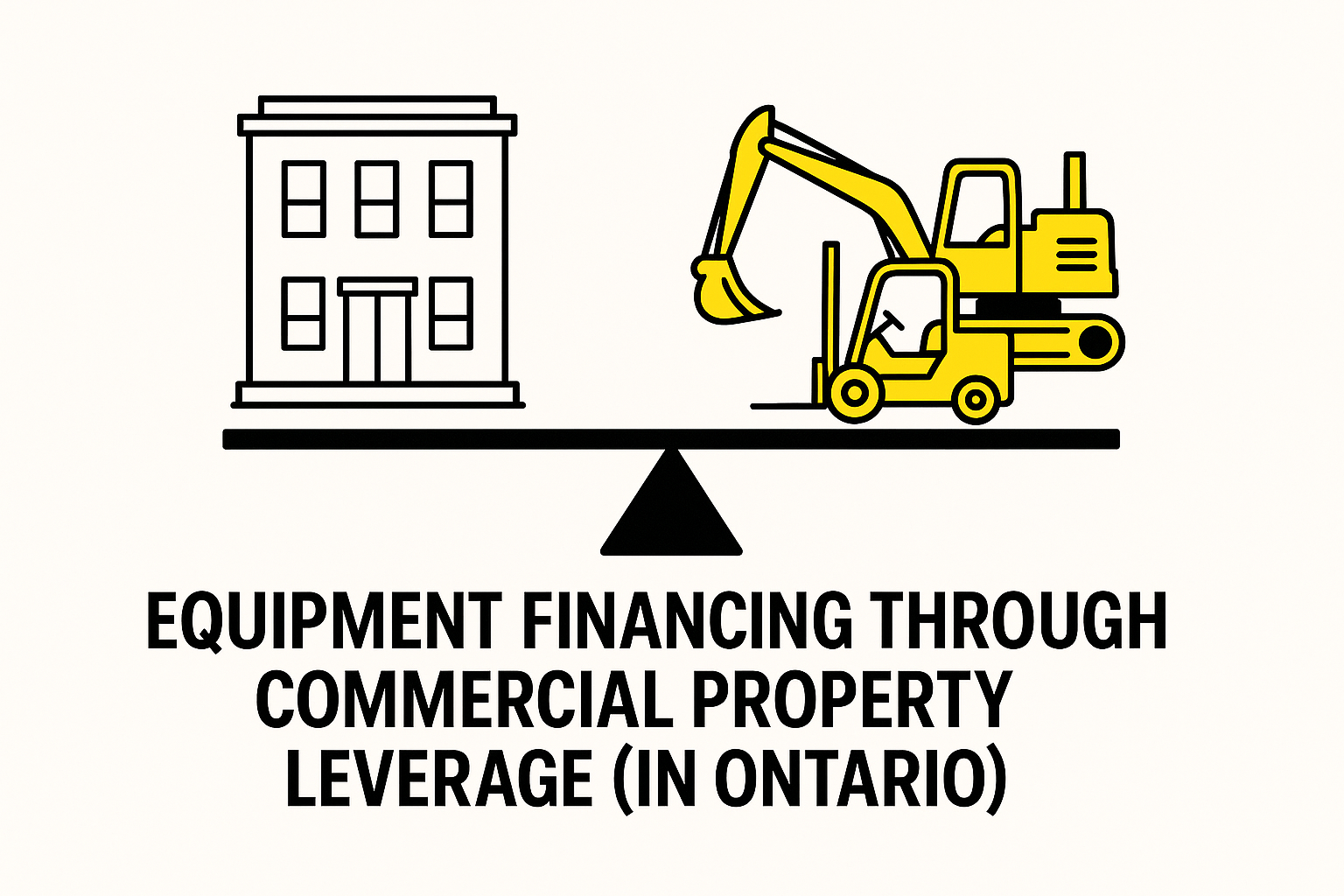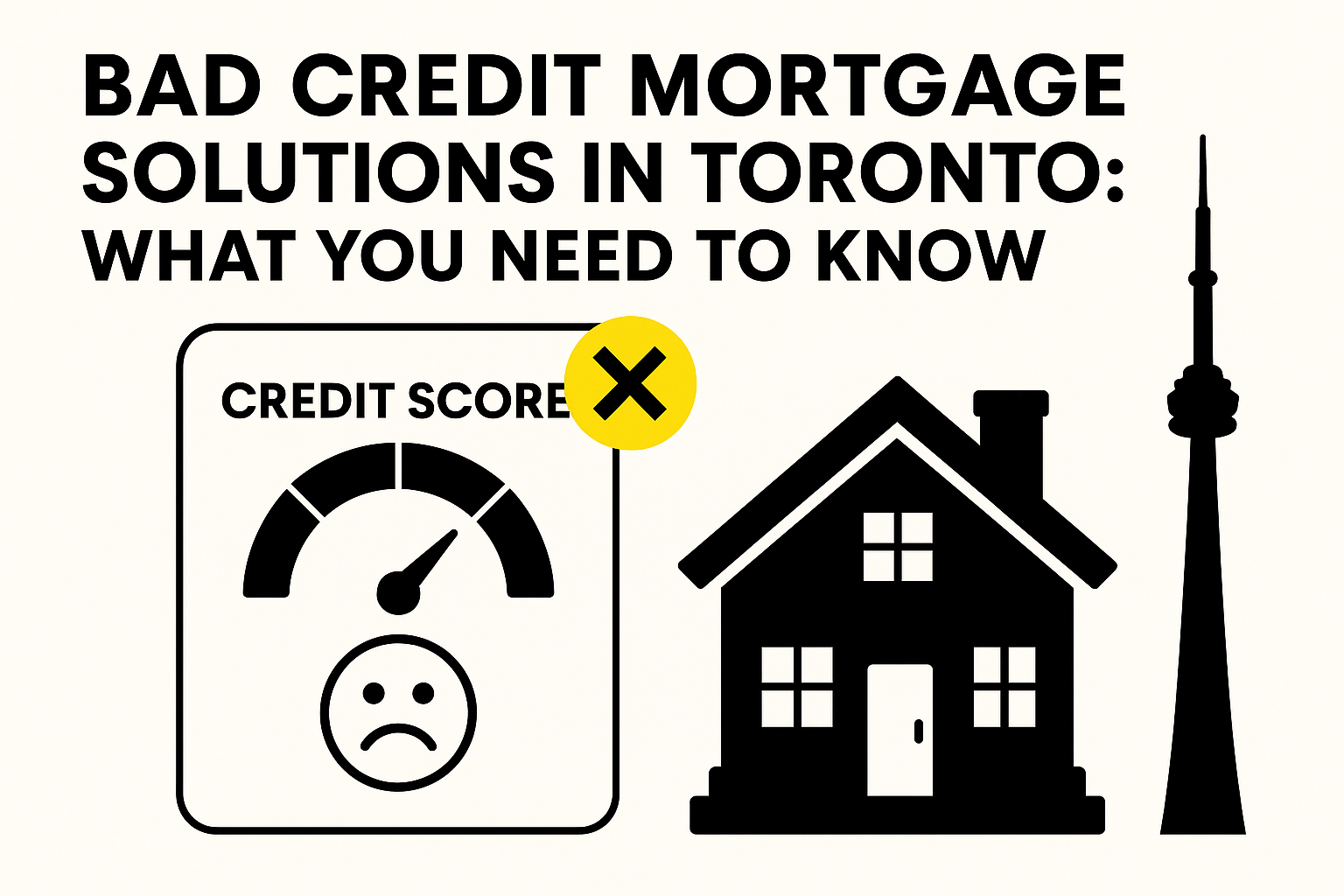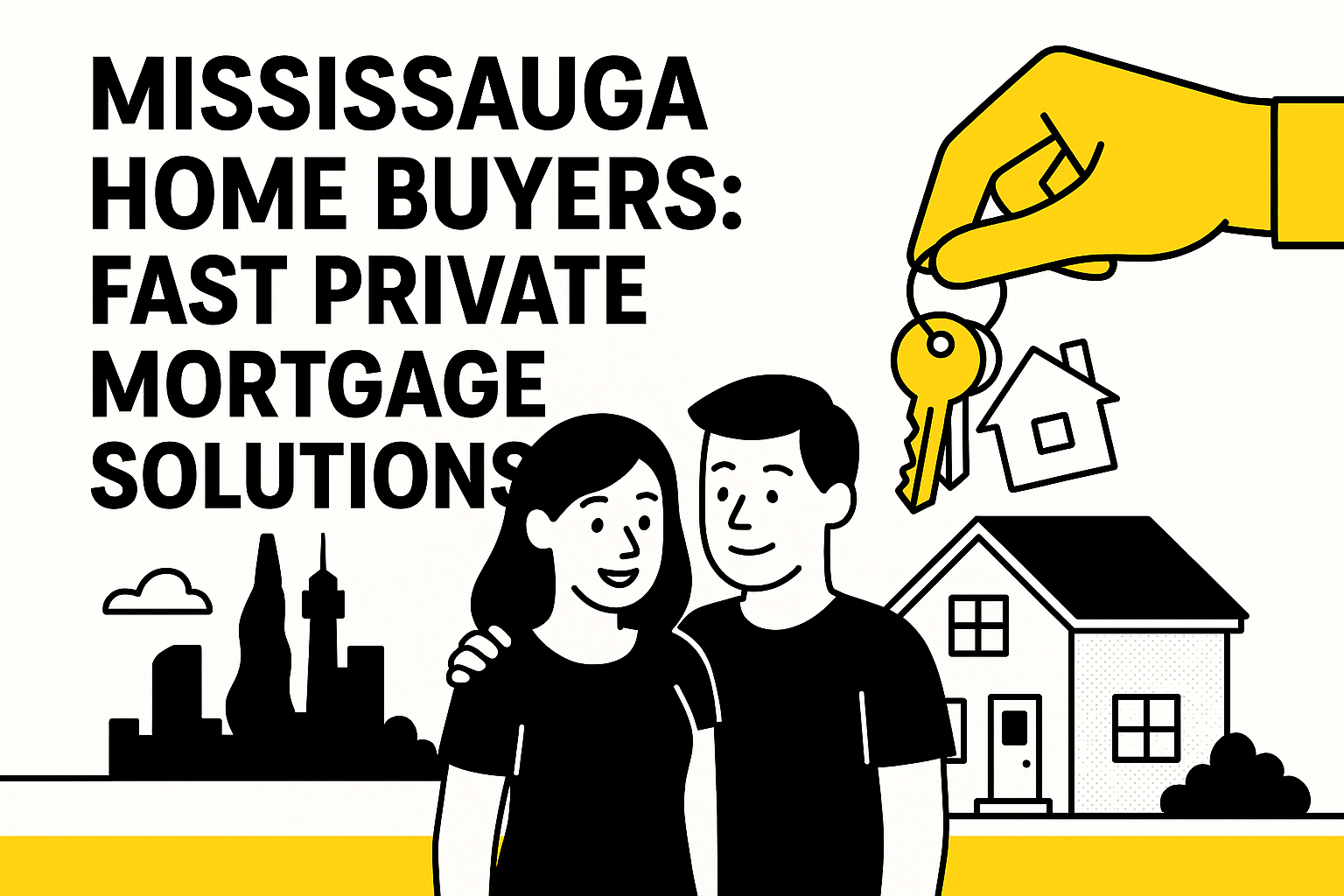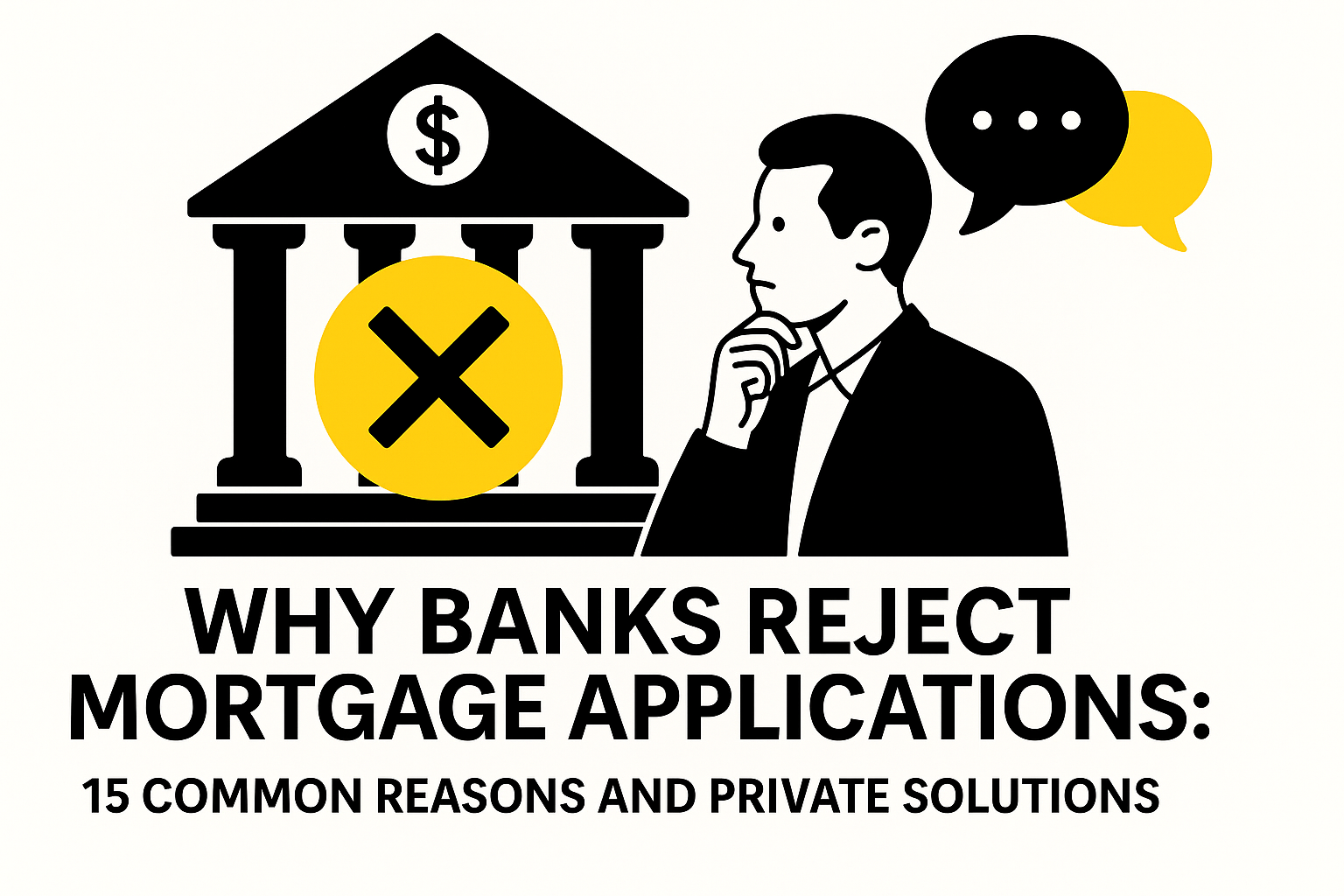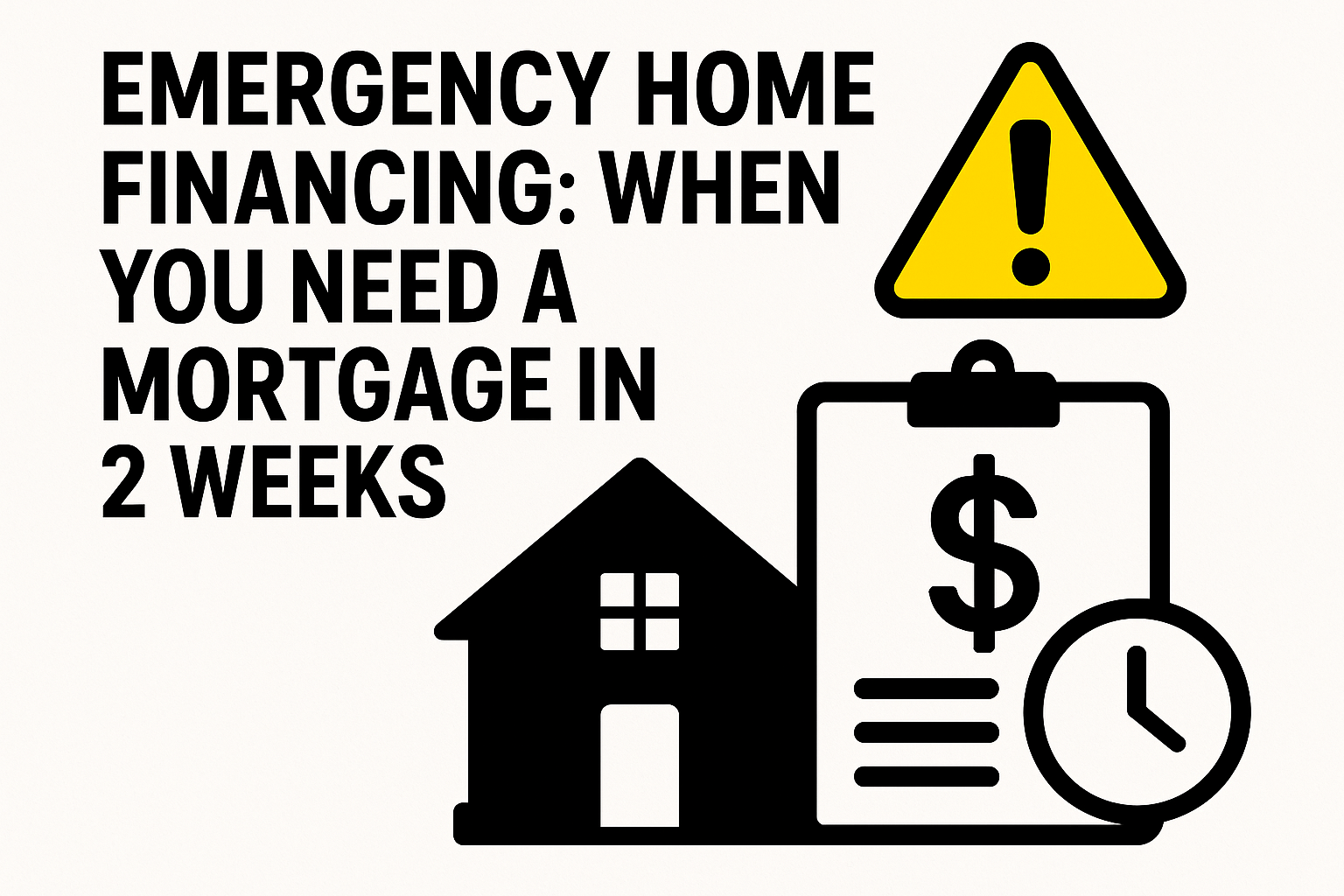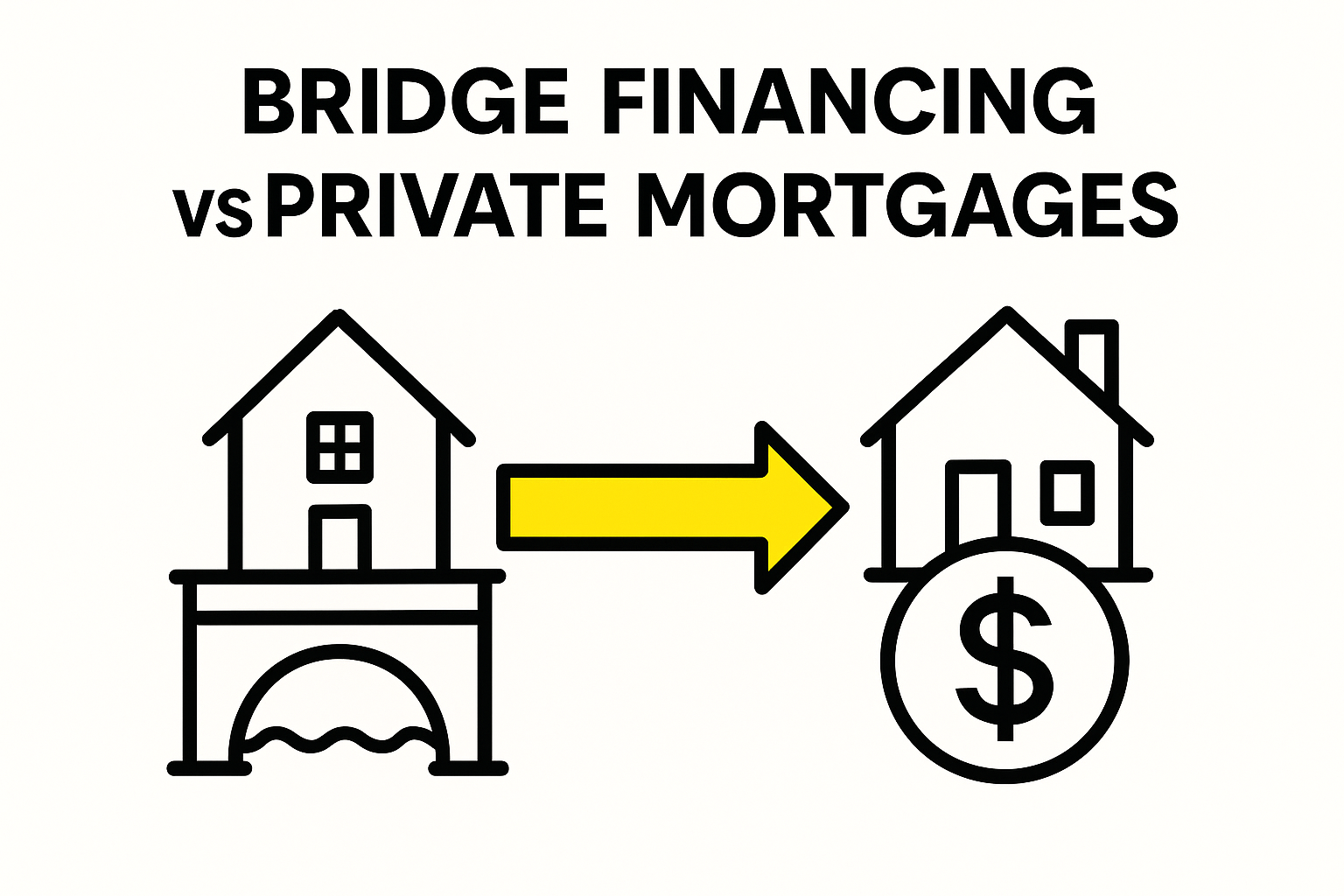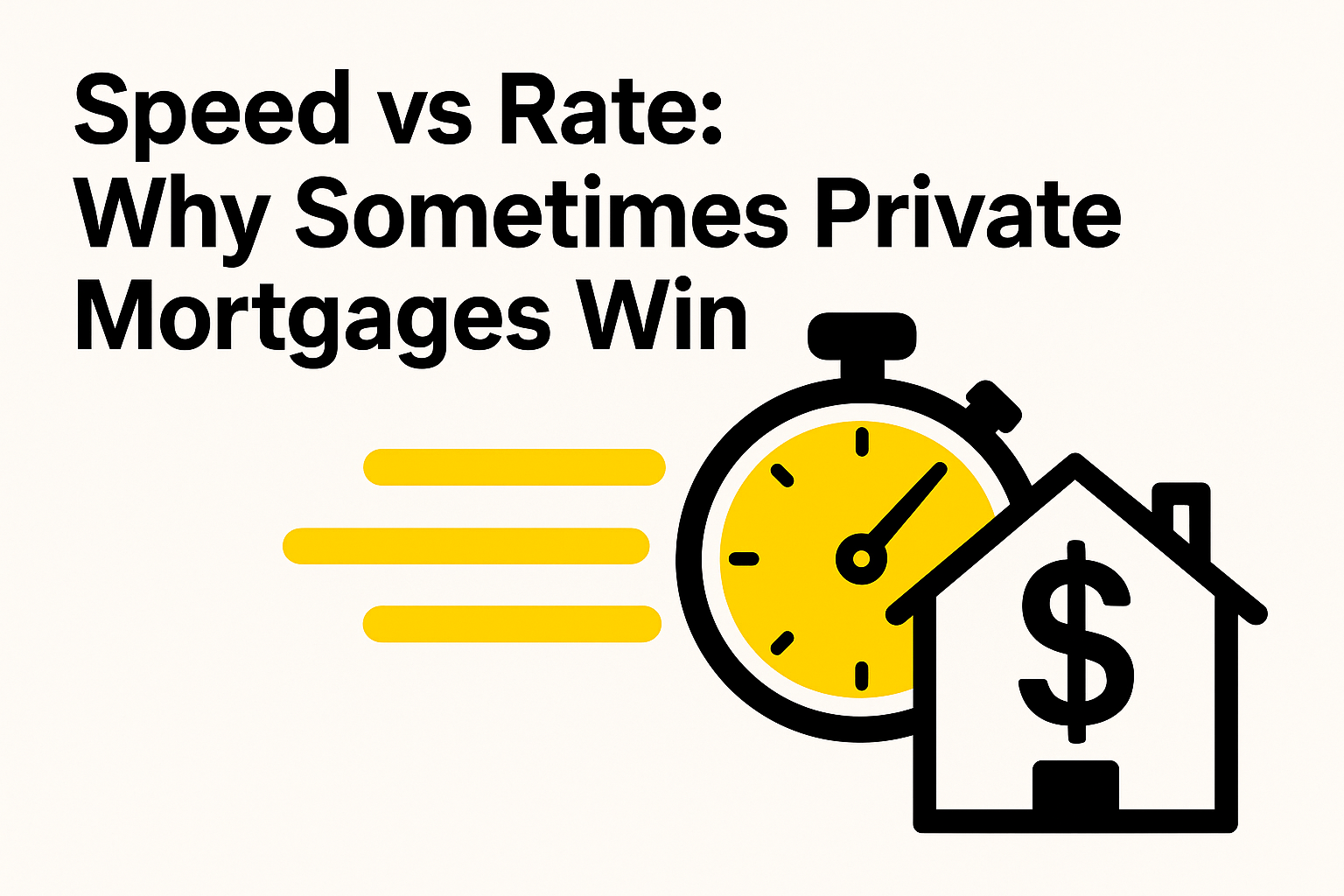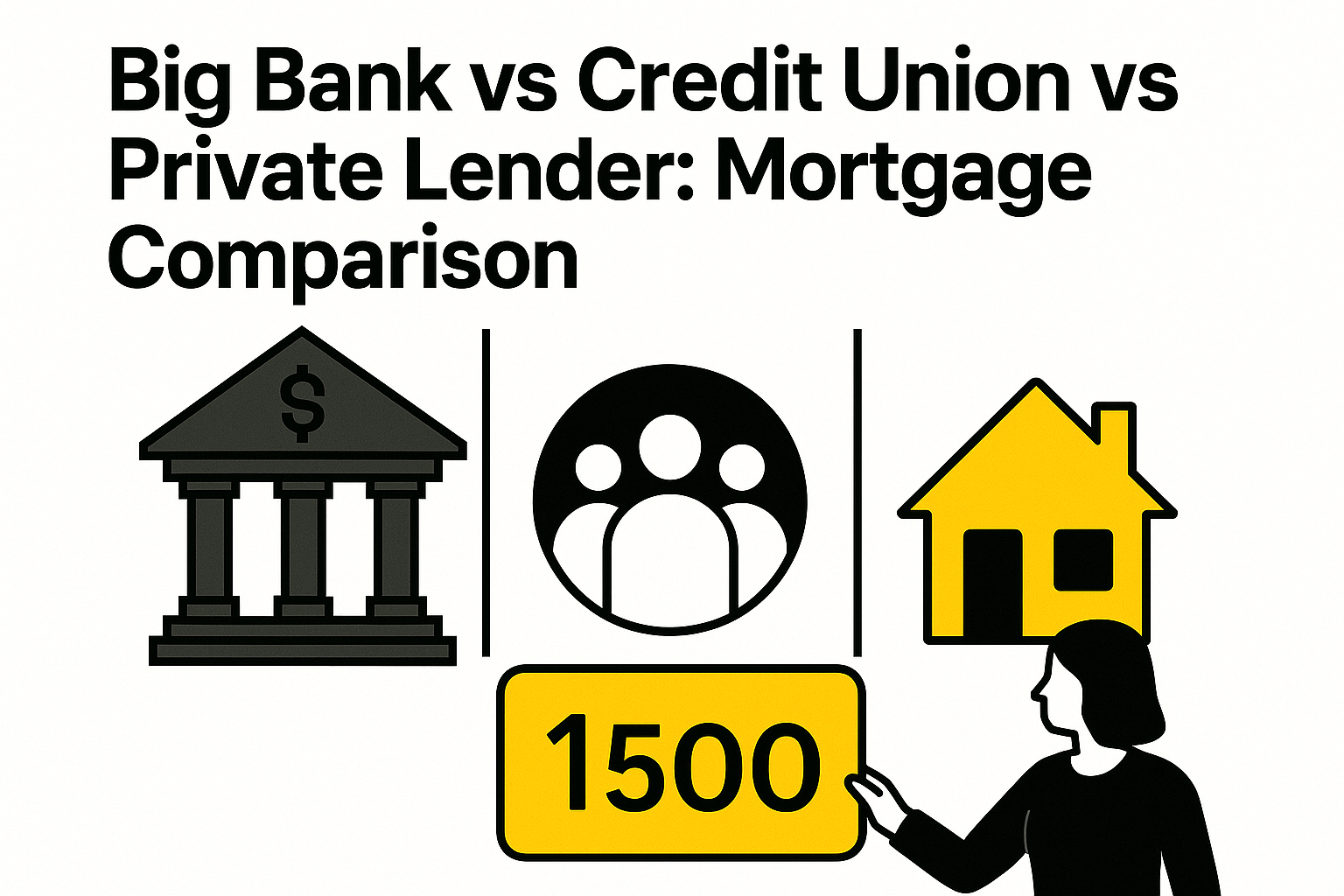Picture a successful manufacturing business in Hamilton that needs $500,000 in new CNC equipment to fulfill a major contract, but their bank wants 25% down and charges 12% interest on traditional equipment financing. Meanwhile, the same business owns their facility worth $1.2 million with only $400,000 remaining on the mortgage, yet they’re struggling to access affordable capital for growth. This scenario plays out across Ontario every week – profitable businesses with substantial property equity paying premium rates for equipment because they don’t understand how to leverage their real estate strategically. The irony is painful: they’re sitting on their most valuable financing tool while overpaying for capital that could fuel explosive growth.
What most Ontario business owners don’t realize is that their commercial property represents far more than just a place to operate – it’s potentially their most powerful source of low-cost equipment financing that traditional lenders rarely explain properly. Property-backed equipment financing can often provide rates 3-5% lower than conventional equipment loans, longer terms that actually match equipment lifecycles, and approval criteria that focus on property value rather than just cash flow projections. Understanding how to unlock this hidden capital source isn’t just about saving money – it’s about gaining the competitive advantage that allows your business to grow while competitors struggle with expensive, restrictive traditional financing.
Understanding Commercial Property Leverage for Equipment
How Property Equity Unlocks Equipment Capital
Commercial property leverage for equipment financing works by using your business real estate as security for loans specifically designated for equipment purchases. Unlike traditional equipment loans that rely heavily on business cash flow and equipment value, property-backed financing focuses primarily on your real estate equity and overall business stability.
The fundamental advantage lies in the security model. Lenders view commercial real estate as stable, appreciating collateral that provides superior protection compared to depreciating equipment. This security allows them to offer significantly better rates and terms than traditional equipment financing.
In Ontario, businesses typically can access 70-80% of their commercial property equity for equipment financing, often at rates comparable to commercial mortgage rates rather than higher equipment loan rates.
The Advantage Over Traditional Equipment Loans
Traditional equipment financing in Ontario typically carries rates of 8-15% depending on equipment type, business credit, and term length. Property-backed equipment financing often provides rates 3-5% lower, potentially saving thousands annually on the same equipment purchase.
Beyond rate savings, property-backed financing offers longer repayment terms that better match equipment useful life, lower down payment requirements, larger financing amounts based on property equity, and more flexible approval criteria focused on property value and overall business stability.
The key insight is that lenders are more comfortable with real estate security than equipment that depreciates rapidly and may become obsolete.
Ontario-Specific Regulations That Protect You
Ontario’s Business Corporations Act and Personal Property Security Act provide specific protections for businesses using property leverage for equipment financing. These regulations ensure proper documentation, fair lending practices, and clear title processes.
The Financial Services Regulatory Authority of Ontario (FSRA) oversees commercial mortgage brokers who arrange these transactions, providing additional consumer protection and professional standards that don’t exist in all equipment financing channels.
Types of Equipment That Qualify
Manufacturing and Industrial Equipment
Manufacturing equipment represents the most common application for property-backed financing. CNC machines, injection molding equipment, packaging machinery, and production lines all qualify readily since they typically have long useful lives and clear value propositions.
Ontario’s strong manufacturing sector means lenders understand equipment values, depreciation patterns, and resale markets for industrial equipment. This familiarity often results in better approval rates and more favorable terms.
The key advantage for manufacturers is accessing larger financing amounts than traditional equipment loans typically allow. Property equity can support million-dollar equipment purchases that might be impossible through conventional equipment financing channels.
Technology and Office Infrastructure
Technology equipment including servers, telecommunications systems, specialized software, and office infrastructure qualifies for property-backed financing, though lenders may be more conservative about loan-to-value ratios due to rapid depreciation rates.
For technology companies in Ontario’s major centers, property leverage often provides the only viable path to large-scale technology investments that banks consider too risky for traditional equipment financing.
Transportation and Fleet Vehicles
Commercial vehicles, delivery fleets, and specialized transportation equipment qualify for property-backed financing with some important considerations. Vehicle depreciation happens faster than real estate appreciation, so lenders typically require lower loan-to-value ratios.
Ontario businesses operating transportation, logistics, or service companies often find property-backed fleet financing more accessible than traditional vehicle financing, especially for larger fleet purchases or specialized vehicles.
Specialized Professional Equipment
Professional service businesses often need expensive specialized equipment that traditional lenders struggle to evaluate and finance. Property-backed financing allows these businesses to leverage real estate equity for professional equipment that might not qualify for traditional equipment loans due to limited resale markets.
Ontario’s professional service sector particularly benefits from this approach since many established firms own valuable commercial real estate but need equipment that doesn’t fit traditional financing categories.
The Mechanics: How Property-Backed Equipment Financing Works
Loan-to-Value Ratios and Equity Requirements
Ontario lenders typically allow 70-80% loan-to-value ratios for property-backed equipment financing, meaning you can access financing equal to 70-80% of your commercial property’s appraised value, minus existing mortgage balances.
For equipment financing specifically, many lenders prefer to see at least 20-25% equity remaining in the property after the equipment loan, providing additional security buffer. This usually translates to accessing 55-65% of total property value for equipment purchases.
Interest Rate Structures vs Traditional Equipment Loans
Property-backed equipment financing rates typically track commercial mortgage rates plus a small premium (0.5-2%), resulting in rates significantly below traditional equipment financing. Current Ontario rates often range from 6-9% compared to 10-15% for conventional equipment loans.
Rate structures may include: • Fixed rates for the entire term, providing payment predictability • Variable rates tied to prime or banker’s acceptance rates • Hybrid structures with fixed rates for initial periods, then variable • Step-up rates that increase over time as equipment depreciates
Repayment Terms That Match Equipment Lifecycles
One significant advantage of property-backed equipment financing is access to longer terms that better match equipment useful life. Traditional equipment loans often max out at 5-7 years, while property-backed options can extend to 10-15 years for appropriate equipment.
Longer terms reduce monthly payments, improving cash flow for business operations and growth investments. However, longer terms also mean paying more total interest and potentially owing more than equipment value in later years.
Ontario Tax Advantages and Incentives
Capital Cost Allowance Benefits
Equipment purchased through property-backed financing qualifies for the same Capital Cost Allowance (CCA) benefits as traditionally financed equipment. Ontario businesses can claim depreciation deductions that often provide substantial tax savings in early years.
Recent federal and Ontario government initiatives have enhanced CCA rates for certain equipment categories, particularly technology and manufacturing equipment that supports productivity improvements or environmental benefits.
Property Tax Considerations
Using commercial property as security for equipment financing doesn’t typically impact property tax assessments directly, since the equipment isn’t considered part of the real estate. However, substantial property improvements funded through property leverage may trigger reassessment.
Ontario’s property tax system does assess business equipment separately in many municipalities, so new equipment may result in additional property tax liability regardless of financing method.
Provincial Business Investment Programs
Ontario offers various business investment incentives that can complement property-leveraged equipment financing strategies. Programs like the Ontario Small Business Development Corporation provide tax advantages for qualifying businesses making substantial equipment investments.
The province’s Advanced Manufacturing Investment Strategy and other sector-specific programs may provide grants, tax credits, or loan guarantees that reduce the effective cost of equipment investments financed through property leverage.
Qualifying Your Commercial Property
Property Types That Work Best
Manufacturing facilities, warehouses, office buildings, and retail properties typically work well for equipment financing leverage. Lenders prefer properties with stable values, good locations, and diverse potential uses if business difficulties arise.
Properties with unique characteristics, specialized uses, or limited alternative applications may face lower loan-to-value ratios or higher rates. Environmental issues, structural problems, or poor locations can significantly impact financing availability.
Valuation Requirements and Appraisal Process
All property-backed equipment financing requires professional appraisals from certified commercial appraisers licensed in Ontario. Appraisals typically cost $2,000-5,000 depending on property size, complexity, and location.
Lenders require appraisals no older than 6 months and may require updates if market conditions change significantly during the application process. The appraisal process typically takes 1-2 weeks and includes property inspection, comparable sales analysis, and income approach evaluation.
Location Factors That Impact Approval
Location significantly impacts both approval probability and terms offered. Properties in Ontario’s major economic centers typically receive better treatment than rural or declining areas.
Factors lenders consider include market stability, transportation access, municipal services, zoning flexibility, and environmental factors. Properties in areas experiencing economic growth typically receive more favorable consideration.
The Application Process in Ontario
Documentation Requirements for Property and Business
Property-backed equipment financing requires extensive documentation covering both your business operations and commercial property.
For the business: financial statements for 2-3 years, tax returns, equipment quotes and specifications, and business plans explaining how equipment supports growth.
For the property: current property appraisal, property tax assessments, insurance documentation, and environmental assessments if required.
Timeline Expectations and Approval Factors
Property-backed equipment financing typically takes 3-6 weeks from application to funding, longer than traditional equipment loans but comparable to commercial mortgage timelines.
Key approval factors include property value and condition, business cash flow and debt service ability, equipment type and business case, personal guarantor strength, and overall business stability.
Working with Licensed Commercial Mortgage Brokers
Ontario’s complex commercial lending market often requires professional expertise to navigate successfully. Licensed commercial mortgage brokers can access multiple lender programs, negotiate terms, and structure transactions for optimal approval probability.
Mortgage Professionals Canada provides resources for finding qualified commercial mortgage professionals who understand property-leveraged equipment financing strategies.
Risk Management and Exit Strategies
Protecting Your Property Investment
Using commercial property as security creates additional risk requiring careful management. Consider adequate insurance covering both property and equipment values, conservative loan-to-value ratios maintaining substantial equity cushions, and business diversification reducing dependence on single customers or markets.
Equipment Depreciation Considerations
Equipment depreciates faster than real estate typically appreciates, creating potential equity imbalances over time. Monitor equipment values relative to outstanding loan balances and overall property equity positions.
For rapidly depreciating equipment, consider shorter loan terms or larger down payments to minimize periods where equipment value falls below loan balances.
Refinancing Options as Your Business Grows
Successful equipment investments often generate business growth that creates opportunities for refinancing at better terms or accessing additional capital for expansion.
Monitor commercial mortgage markets for refinancing opportunities that could reduce costs, extend terms, or free up additional equity for business growth.
Here’s your equipment financing decision framework:
| Factor | Property Leverage Best When | Alternative Financing Better When |
| Property Equity | 30%+ equity available | Limited property equity |
| Equipment Type | Long-life, stable value equipment | Rapidly depreciating technology |
| Business Stage | Established with stable cash flow | Startup or rapid growth phase |
| Financing Amount | Large purchases over $250,000 | Smaller equipment needs |
| Risk Tolerance | Comfortable securing property | Prefer unsecured financing |
This framework helps identify when property leverage makes sense versus exploring alternative equipment financing strategies.
Frequently Asked Questions
What types of commercial properties qualify for equipment financing leverage in Ontario? Most commercial properties including manufacturing facilities, warehouses, office buildings, and retail spaces qualify. Lenders prefer properties with stable values, good locations, and multiple potential uses. Properties with environmental issues or highly specialized uses may face restrictions.
How much equipment financing can I access relative to my property value? Ontario lenders typically allow 70-80% total leverage against commercial property value, minus existing mortgages. For equipment financing specifically, expect access to 55-65% of property value while maintaining required equity cushions.
Are interest rates really lower than traditional equipment loans? Yes, property-backed equipment financing typically offers rates 3-5% lower than conventional equipment loans. Rates often track commercial mortgage rates plus small premiums, currently ranging 6-9% versus 10-15% for traditional equipment financing.
What happens if my equipment becomes obsolete before the loan is repaid? This risk exists with any equipment financing method. Property security provides flexibility to potentially refinance or restructure if equipment values decline significantly. Consider shorter terms for rapidly evolving technology.
Can I use equipment financing to purchase multiple types of equipment simultaneously? Yes, property-backed financing can support diverse equipment purchases in single transactions. This approach often provides better rates and simpler administration than multiple separate equipment loans.
How does equipment financing through property leverage affect my business taxes? Equipment purchased through property-backed financing qualifies for the same Capital Cost Allowance benefits as traditionally financed equipment. The financing method doesn’t impact tax treatment of the equipment itself.
Conclusion
Equipment financing through commercial property leverage represents one of Ontario’s most underutilized business growth strategies, offering established companies with real estate equity access to capital at rates significantly below traditional equipment financing options. The mathematics are compelling: why pay 12-15% for equipment loans when your commercial property equity can unlock the same capital at 6-9% with longer terms and more flexible qualification criteria? Yet thousands of profitable Ontario businesses continue overpaying for equipment financing simply because they don’t understand how to strategically leverage their most valuable asset.
The businesses that master property leverage gain sustainable competitive advantages through lower capital costs, improved cash flow management, and access to equipment investments that competitors can’t afford through traditional financing channels. Understanding when and how to use your commercial real estate strategically isn’t just about saving money on individual equipment purchases – it’s about building financial flexibility that supports long-term growth and market leadership in Ontario’s competitive business environment.
Ready to explore equipment financing through your commercial property equity? Contact HERCULES Team Investment Group today to analyze your property’s financing potential and develop equipment investment strategies that accelerate your business growth while optimizing capital costs.

